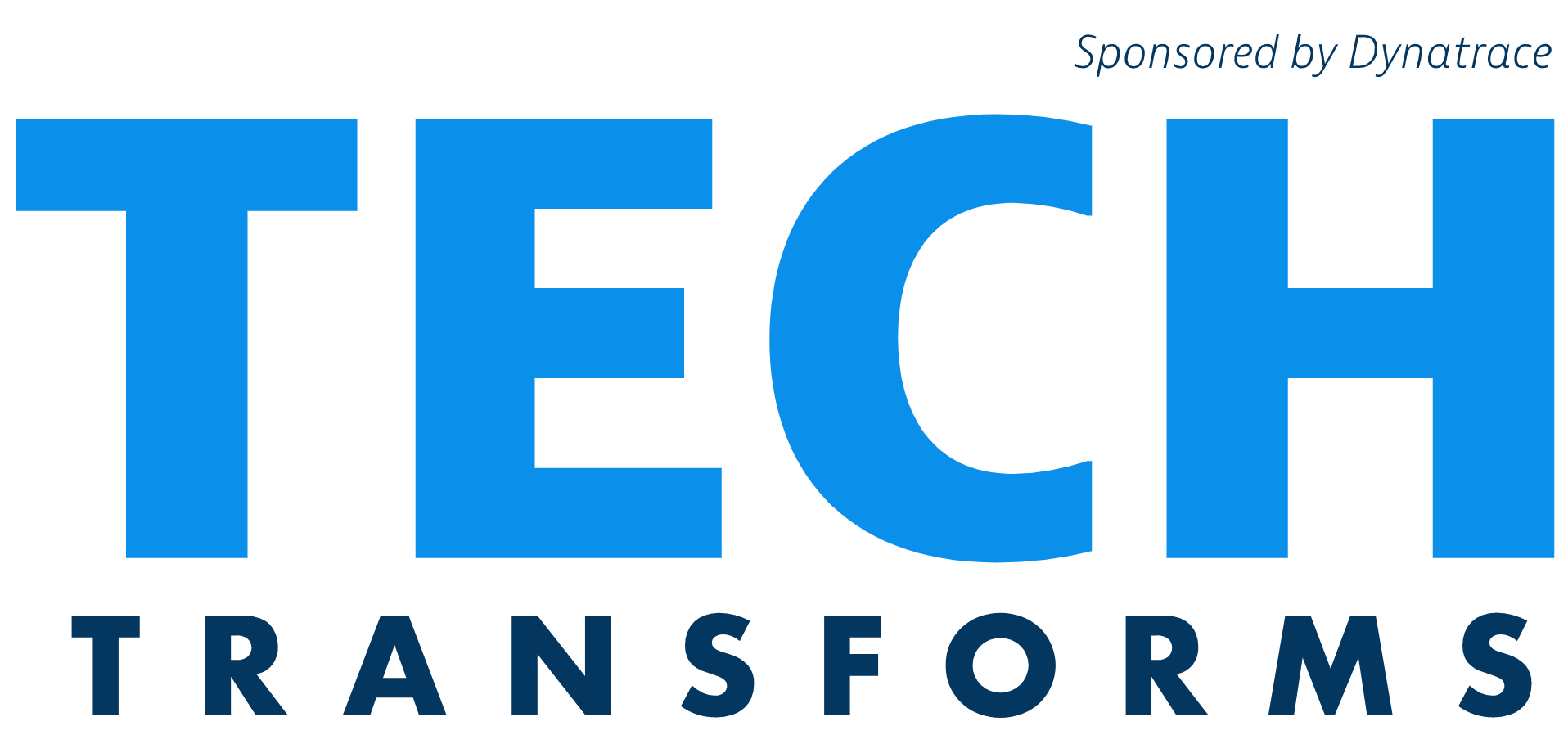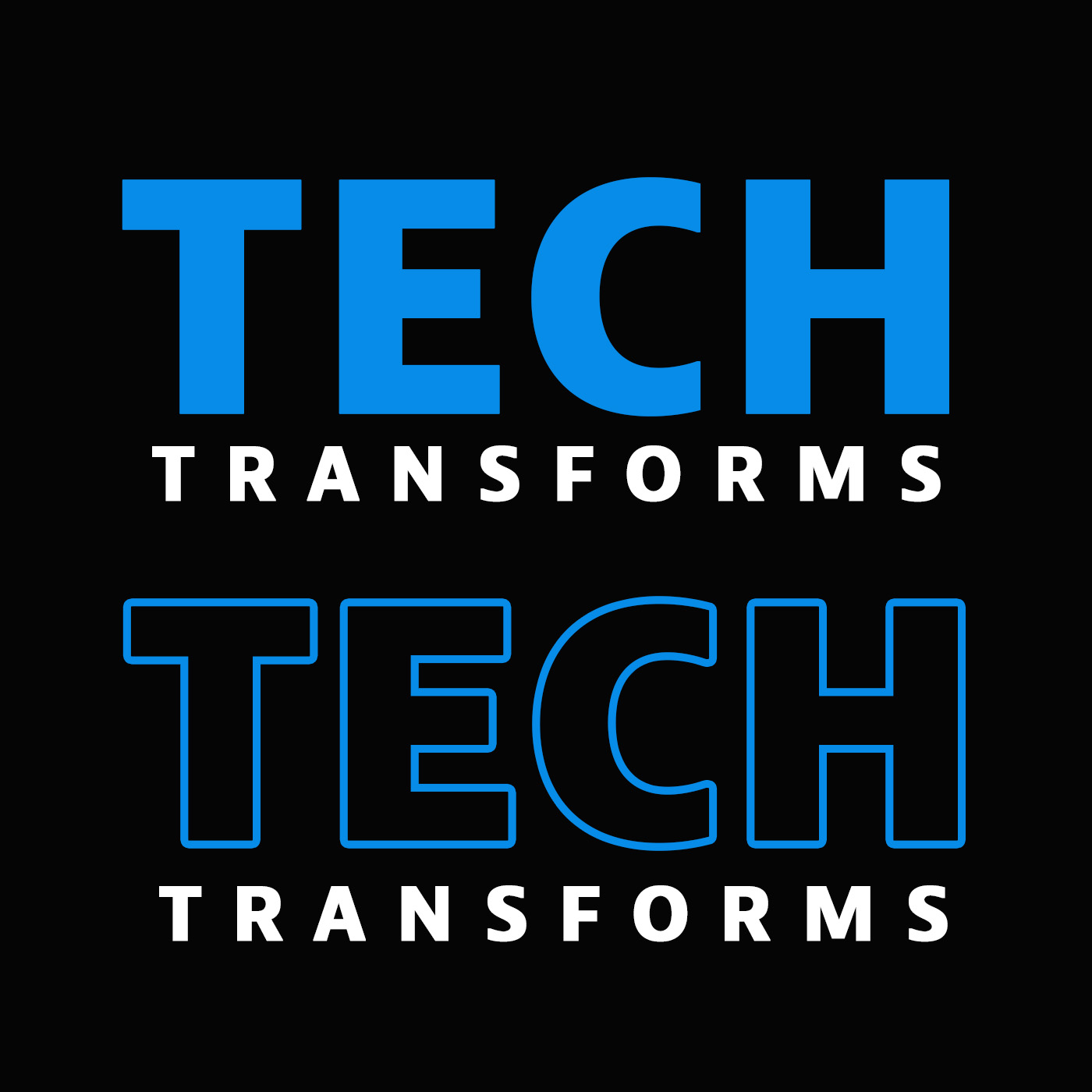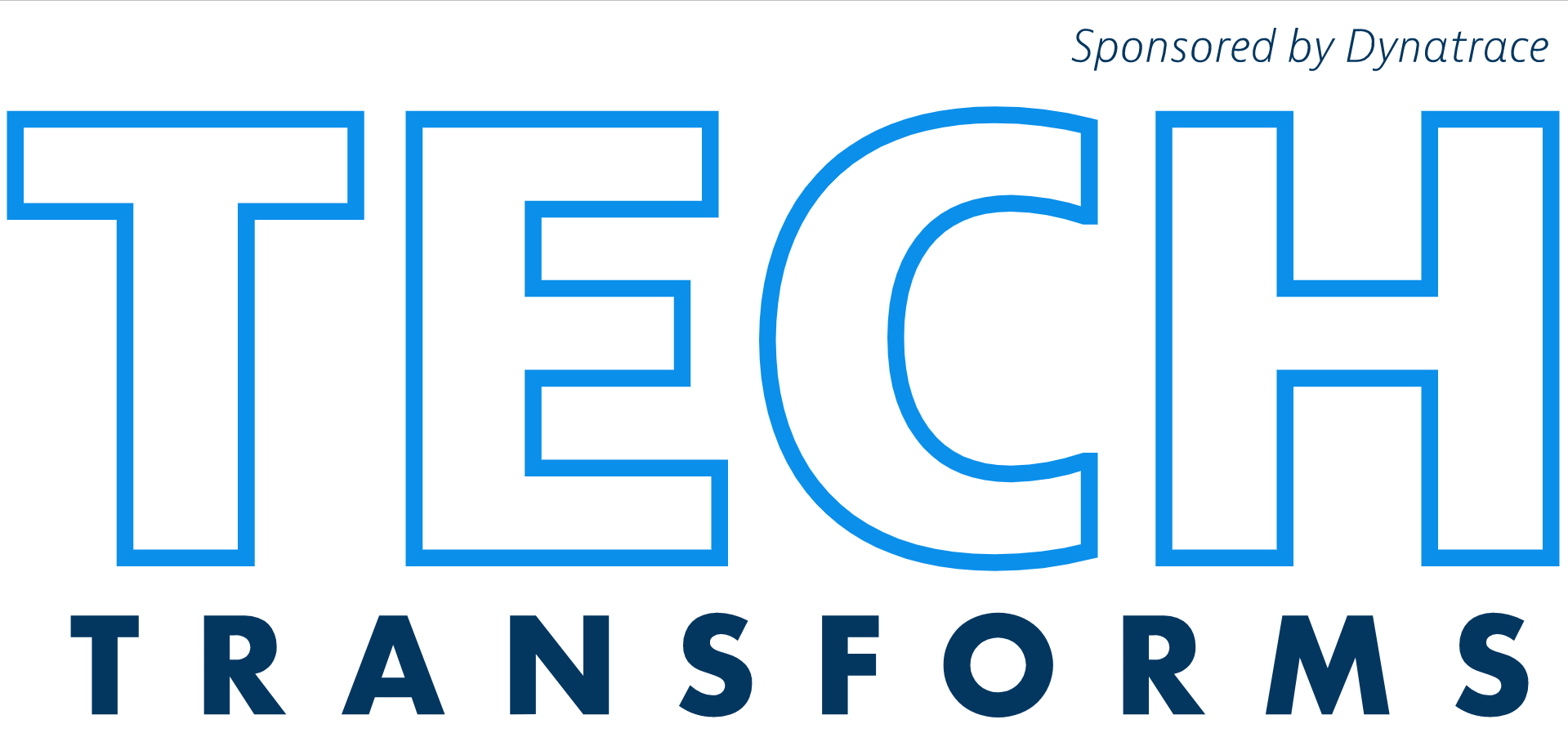Episode 7
Racing! Crossover Episode with Break/Fix: The Gran Touring Motorsports Podcast
On this crossover episode Carolyn and Mark learn about the power of racing. Eric Monterastelli, Public Sector SE at Dynatrace and host of Break/Fix: The Gran Touring Motorsports Podcast, joins the Tech Transforms team to talk about where the rubber meets the road in government technology.
Episode Table of Contents
- [00:51] Across the Side of Racing
- [06:59] All Racing Cars Have Self-Correcting Computers
- [14:16] From the Performance Racing Side
- [20:09] The Rule of Three in Racing
- [27:00] International Racing of Champions
- [33:01] Unlimited Funds To Fill a Racing Car Garage
Episode Links and Resources
Across the Side of Racing
Mark: We have invited our friend, Eric Monterastelli to join us on a crossover episode for this morning's Tech Transforms.
Carolyn: His podcast is Break Fix. Thanks for being here, Eric, and we're super excited to talk to you today.
Eric: That's right, folks. It's not uncommon to see IT branding plastered across the side of race cars in many motor sports disciplines. Names like AWS, CrowdStrike, and SailPoint immediately come to mind. But for application performance monitoring and artificial intelligence, the relationship between technology and racing goes far beyond stickers and sponsorship dollars.
As Carolyn pointed out, this is a crossover episode between Break Fix and Tech Transforms. I'd like to personally thank Mark and Carolyn for having us on their show to explore this idea.
Carolyn: It's a little bit geeked out for me, so let's just get really basic. Talk about cars and racing first. Tell me how you got into cars and racing in general.
Eric: I'll keep it brief because I think that could be a whole episode into itself. Gran Touring Motorsports was founded in late 2013, officially 2014. Our mantra is to continue to spread motorsports enthusiasm. The idea is that people understand that there's multiple disciplines to racing. Racing is a big part of our world, whether you believe it or not.
The chemistry, the science, the technology, the engineering that trickles down into your daily car is incredible. It all stems from manufacturers using the racetrack as their test center. Think about it from that perspective. Here at GTM, we want to continue to spread that enthusiasm because if we don't, racing will dry up.
Tied Into the Racing Community
Eric: That advancement in technology ceases to exist. We've been around now for almost eight years. We have our own podcast, Break Fix, we talk about all sorts of different things. Ranging from these super technical episodes, all the way up to advice episodes.
Like, what should I buy, and things of that nature. Personally, I got into cars by way of genetics. From my grandfather to my dad, and to me. Hopefully I get to pass it onto my daughters along the way. We've been tied into the racing community for a very long time.
I’ve been a high-performance driving instructor for almost a decade. Before autocrossing, I was a cart racer nationally. It's unfortunately in the blood. What I find most interesting about it is that there's a huge intersection between the automotive and the IT world.
I also followed in my father's footsteps, who was a mainframe programmer. I’ve had the IT side, and also the racing side. As a younger racer, I was involved in things like timing and scoring. I went to work for British Aerospace, where I tried desperately to get in on their helicopter division.
Because I was actually working on engine management systems at another company. So, data, technology, IT, racing, it's all very intertwined. As I grew more into ProAm racing, time trials, and other disciplines, I started to realize how valuable the data that we collect.
Not just from the cars, from the track, and from the motors and all this stuff related to what I was doing in the SIM and threat intelligence world and also in the APM and artificial intelligence space. There's this huge crossover there. I want to be able to explore that with you guys.
The Mechanics and Infrastructure of Cars
Mark: It seems to me that in the sixties and seventies, the things that teams would do to increase their edge was around mechanics and the infrastructure of cars. Over the last 20 years, there has been that shift to IT and leveraging technology to give racers an edge on the racetrack.
Eric: You're a hundred percent right. I'll use an example. Colin Chapman, the founder of Lotus is infamously known for both pushing the boundary and cheating like crazy. What he did is, he found loopholes in the rules where he could take experimental technology and push the boundaries of racing and engineering.
So how do you control that? More rules get put into place to try to squelch that. You penalize people, these kinds of things, but really what he was doing is he was moving everything forward. Back then in the sixties and seventies, and even still partially in the eighties where you didn't have big data available, it was all trial and error. Let's use Formula 1, as an example.
You'll see cars back in the seventies with six wheels. You're like, "Why is that a good idea?" Because somebody needed to try. Chaparral was famous for mounting fans on the bottom of the cars to try to absorb them into the pavement. To create ground effects instead of doing studies and aerodynamics.
Mark: So the cars wouldn't fly off the racetrack.
Eric: Exactly. There's all this trickery and all this crazy stuff that they would do, but we've shifted away from that. We've shifted away to raw data to say, what is that tire doing in that corner, under load at this pound of pressure?
Bridging the Physical to the Digital
Eric: But if we change it by half a pound, what difference does it make? How much more G can we pull in that corner? We've gotten to the deeper layers of the science, and the engineering to make these cars go faster. That's why, if you look at a Formula 1 car of today versus 1960, it's completely different.
Mark: To bridge the physical to the digital, cars have sensors. These microchips are all embedded throughout the structure of the car to feed that data back.
Carolyn: Even on the tires?
Eric: Yes. So get this. Starting in the 1990s and the advent of something known as OBD1, so now we all run OBD2 or CAN buses. There's actually a port in the car that you can tie a laptop into, and pull all sorts of information from all over the vehicle. More and more manufacturers are putting that up on the heads up displays and on the dashboards these days, which is fantastic.
It's right there at your fingertips. But starting in the 90s, they needed a way to interface with the engine because they were putting in more sensors. Thanks to electronic and programmable fuel injection, engine management, it's also known as. So, there's a sensor for water. There's a sensor for oil. There is a sensor for pressure.
There's a sensor for the rotational speed of the motor at the crank and at the cam. It's very nit-noid information. And it's all to keep the engine running at maximum efficiency under multiple conditions. So just because you're tooling down the highway, that computer on board is making corrections in microseconds, if not faster.
Carolyn: It's correcting itself?
Eric: Yes, it is a self-correcting computer.
All Racing Cars Have Self-Correcting Computers
Mark: The electronics we have are just a much more simplified version of that, not corrective.
Eric: All cars, even your street cars have these self-healing self-correcting computers. The way it works is that a lot of it is for emissions. A lot of it is for efficiency, a lot of it is for power. For instance, in the old days, I'll draw a parallel to understand that a carburetor is very static. You jetted it a certain way, ran terribly when it was cold and the barometric pressure was wrong.
You had to reject it, and tweak it, and get under the hood to get it to purr just perfectly. Now with electronic fuel injection, it takes that into account. It takes into account atmospheric pressure, air temperature, elevation, all this kind of stuff. And it makes corrections based on where you are, where the pedal is at any given time.
Carolyn: Are we talking about AI?
Eric: We're talking about mechanical aid.
Carolyn: My car?
Eric: Yes. That's pretty cool.
Carolyn: In my mind, I'm drawing all these parallels to what you do for work with the government and how these race cars and cars in general work.
Eric: So telemetry used in a race car finds itself on the back of a Humvee. Finds itself in a tank, finds itself on an airplane. So, weapons systems, navigation systems, all that can be tied back in some ways to the automotive world, including GPS work. Because we do use GPS telemetry as well to calculate speed, and distance, and all sorts of additional telemetry when objects are in motion.
Carolyn: Does the government use the data gathered on the racetrack?
Engine Management
Eric: I'll put it this way. I've worked on some projects that were tied into engine management on tanks and Humvees. So it is possible. I don't know that I can expand too much further than that. But the data collected there is very similar to the data that's collected in your passenger car, as well as the race car.
Mark: I would imagine it's probably more finely tuned for aircraft than land vehicles.
Eric: In the airplane, yes. Because you have to take into consideration yaw and pitch and elevation and all the atmospheric conditions. But that's also true in other disciplines of motor sport. If I'm talking about off-roading the terrain, then the pitch and yaw of the vehicle is extremely important. When I'm looking at using sensors to show the articulation of my suspension.
How much suspension travel do I have, how much rotation per axle am I using? Do I need to transfer power from the front wheels to the rear wheels? You see those commercials all the time from Audi and Subaru about how it does all this stuff. A lot of that is computer-controlled. It's very much that mechanical AI, making those decisions based on the sensors, and the telemetry that it's collecting in real-time.
Mark: I imagine in the performance racing industry, when you're going at speeds at 200 miles per hour, or greater. Decisions need to be made and milliseconds, it ups the ante a lot greater.
Eric: That is very true. We're not at Mach two or whatever, like a fighter jet, but you're absolutely correct. In both cases, there's still that common denominator of, as we say in our world, the meat behind the steering wheel.
The Augmented Reality of AI in Racing Vehicles
Eric: There's still an organic computer making those minute by minute or second by second decisions. With the augmented reality of AI in the vehicle controlling those multitudes of different systems that are helping that person, that pilot, that driver be able to do what they do.
Carolyn: A lot of tech companies plaster their names on the sides of cars. I'm not going to lie, I thought it was a testosterone thing. But you said, there's this intersection between the racing and the tech world. Is it just an advertising ploy or is there more to it?
Eric: If you ever speak to any race engineers, or if you happen to go to say an IMSA where you can get really close to the pit boxes. Something like the Rolex 24 hours or the sale in six hours at Watkins Glen. If you can get your eyes inside the booth, you'll see that it looks like a command center.
You'd think you were at NASA, it's all screens. All data coming in real-time, over wireless into the booth race engineers are analyzing the data. They're also leveraging platforms like AWS and Azure to run their applications. They need to be able to get this stuff immediately. Because what they can do from those, let's say control booths, is also send corrections back to the car.
Some drivers, let's say Formula 1, if you've ever looked at the steering wheel, they have dials and knobs. They can make changes. They're talking back and forth with the pit constantly, "The car is doing this." And they're like, "All right, give it a little bit of tweak on this dial," and it'll make a change to the suspension as they're driving.
Other Disciplines of Racing
Eric: But there's also other disciplines of racing, especially endurance racing, where they're watching the cars for longer periods of time. They need to be able to manage them over the course of that race. They can send over the air changes to the vehicles.
Carolyn: Are they correlating the data like in this command center? Do they have a big seam that they're pulling everything in and cross tabbing and data analysis? Or do you have specialists like one's looking at the tires and one's looking at the key.
Eric: You actually have both. Then you also have on-track telemetry. You've got folks that are responsible for certain parts of the car, let's say the tires, they're responsible for fueling. You can get really deep on many different portions of that stack. Let's call it the racing stack there that goes on on race day.
On the other side of it, it's also the telemetry from the track. They're going to have people that are just watching the weather. Studying the weather and how the weather conditions and slight changes in temperature of the air are going to change the way the motor performs. Like losing upwards of let's say 20 horsepower, because there's one degree of weather change or rain is on its way.
We've got to make strategic decisions on what tires we're going to use. How long are we going to stay out? We just passed Le Mans a weekend or two ago. That track is famous for being rained on one side and completely dry on the other because a full lap is almost nine miles long.
Carolyn: The one in Ford versus Ferrari?
There’s a Lot to Take In
Eric: Absolutely. There is a lot to take in, there's a lot of data. There's a lot of different sources of authority that are providing data just like there would be in an IT ecosystem. You've got firewalls, routers, IPS's, and an active directory. You have storage systems that are providing you with tons of metrics. And you have to have a way to correlate all that together and make sense of it.
If there's a problem, and if you happen to listen to Le Mans two weekends ago. They could pinpoint an issue on the car before even the driver could tell it was about to happen. They're always talking back and forth. Like, "This is about to go down. You should bring the car in. We want to look at this particular thing. A sensor is telling us that there's an issue."
The same is true of IT. If you can forecast that, "We've got an IOP degradation here on this particular sand server. It's going to cause this ripple effect, we're going to have to V motion. We're going to have to do this. That's going to cause an outage, looking at real user monitoring. We're going to have an issue where we're going to have people that are down and are going to be stuck in limbo." The same is true on the racetrack.
There's this interesting intersection between two worlds. Where racing is this more mechanical application performance monitoring versus what we're used to on the IT side of the house. View a race car as an application, view the track as an ecosystem. Very similar to your data center or to your mission application, that you might be working on right now.
From the Performance Racing Side
Mark: I'm interested to see how you can talk a little bit more about how you apply some of those disciplines. From the performance racing side to IT that we see or that we're talking to government customers about.
Eric: There's always the physical side of racing, the car, the machine, the boat, the airplane, whatever it might be. But there's also the driver's side. How do you determine a talented driver from another driver? There's also another subcomponent of data there.
Mark: Is that like the end-user?
Eric: Absolutely. Lewis Hamilton, eight-time world champion Formula 1 driver. He was good, he was naturally talented. If they left him where he was, maintaining the status quo, he would have only gotten so much better. So then there's the telemetry of the driver. It coincides with the telemetry of the car, but it has to do with their physical abilities.
It has to do with their risk mitigation, it has to do with how consistent they are on track. The key on track is consistent lap times being not a second apart, a second is a light-year. You need to be hundreds, if not tens of thousands of a second lap per lap. And you need to be that precise, racing is a precise sport.
That being said, there's other forms of telemetry that we use to better the drivers. To help teach them, help educate them, and get them away from the status quo. I relate that back to continuous monitoring, CIC pipeline. All these kinds of things where not only is my driver, the end user, but he's also my mission act. How do I make my mission act better? And how do I make it more efficient?
Monitoring the Driver App
Carolyn: How are you monitoring the driver app? Is the driver hooked up to sensors?
Eric: Sometimes, yes. Actually, in the longer endurance races, they do have health and status monitors because they are in the car for long periods of time. In a race like Le Mans, there is a minimum of three drivers per team. Sometimes there's four, and they'll do double stints. They're out there for six hours or they're out there for three hours at a time. That's a lot to take in.
You have to think about health, hydration, nutrition, all that stuff. There's doctors on staff. Let's take that out of the equation. But also how do I make that guy be consistent for three hours in the middle of the night when he's only running on two hours of sleep? Obviously, I could probably inject him periodically.
Mark: Think of the endurance of doing an ironman. But when you're going 200 miles per hour, 220 down straight away, you have to be alert. So it does make a difference. I think about the endurance where you sit in a car for eight hours.
Eric: To go back to your question and to your point, there's one system. Even in my more grassroots world where I'm teaching folks that might be from the government. Or they might be from industry, or they might be from wherever that they got this bucket list.
Maybe they bought a Porsche, they retired or Corvette, and they want to go out and experience the track. Well, how do I make them better? I can teach them how to be safe, I can teach them how to be fast.
What’s in My Toolbox
Eric: But if I want them to be perfect and be consistent, I have to use data. It's in my toolbox of things. There's been a go-to product for a very long time known as the EM. It's an Italian product. They have a whole series, the EM Solo and the smarty system and the DMX's, and all these different pieces.
What it does is you attach it to the car, very simply. It's not something I have to tie in, and integrate like an octopus into the vehicle. I can throw it




